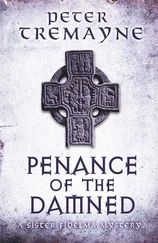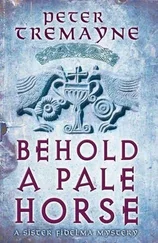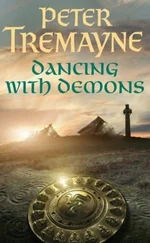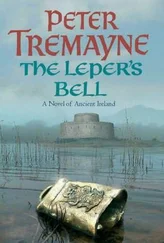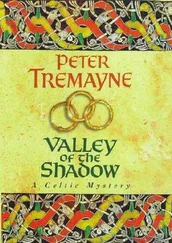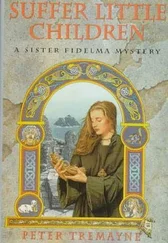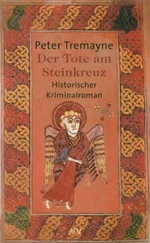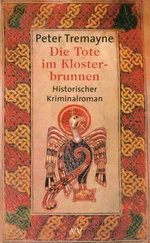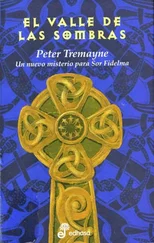The overseers moved down the rows of slaves as they grunted and strained against their oars, encouraging them to greater efforts with cracking whips and oath-filled screams. Now and then there came a sharp cry of pain, as the tongue of a whip made contact with unprotected flesh. Eadulf watched the sailors running hither and thither on their unaccountable tasks with an ill-concealed feeling of envy. He suddenly shook himself as he registered the thought.
He should envy no one, for he had turned his back on his inheritance as hereditary gerefa, or magistrate, of the lands of the thane of Seaxmund’s Ham when he had reached his twentieth birthday. He had forsworn the old gods of the South Folk, in the kingdom of the East Angles, and followed the new God whose teachings had been brought to them from Ireland. He had been young and enthusiastic when he had fallen in with an Irishman who spoke terrible Saxon but had succeeded in making his purpose known. The Irishman, Fursa by name, had not only taught Eadulf how to read and write his native Saxon, a language which Eadulf had never seen written before, but Fursa imparted to him a knowledge of Irish and Latin in addition to converting him to the knowledge of Christ, the Son of the God with no name.
So apt a pupil had Eadulf become that Fursa had sent him with letters of introduction to his own land of Ireland, firstly to a monastery at Durrow, where students from all four corners of the world were educated and trained. For a year Eadulf had studied in Durrow among the pious brethren there but, finding an interest in the cures and healing powers of the Irish apothecaries, he had gone on to study four years more at the famous college of medicine at Tuaim Brecain, where he had learnt of the legendary Midach, son of Diancecht, who had been slain and from whose three hundred and sixty-five joints and sinews and members of the body three hundred and sixty-five herbs had grown, each herb with the virtue to cure that part of the body from which it had grown.
That learning had awakened in him a thirst for knowledge and a discovery that he also had the ability to solve riddles; puzzles that were like an unknown language to some became an easy conundrum for solution to him. He supposed that the ability had something to do with his having acquired through his family, which held the position of hereditary gerefa, an oral knowledge of the law of the Saxons. Sometimes, though not very often, he would regret that, had he not forsworn Woden and Seaxnat, he too would have become gerefa to the thane of Seaxmund’s Ham.
Like many another Saxon monk he had followed the teachings of his Irish mentors on the liturgical usages of their church, the dating of the Easter celebration, so central to the Christian faith, and even the style of their tonsure, the shaving of the head to denote that their lives were dedicated unquestioningly to Christ. Only on his return from Ireland had Eadulf encountered those religious who looked to the Archbishop of Canterbury for authority which came from Rome. And he had discovered that Rome’s ways were not those of the Irish nor, indeed, of the Britons. Their liturgy was different, the dating of Easter and even the style of their tonsure differed sharply from Rome.
Eadulf had decided to resolve this mystery and so undertook a pilgrimage to Rome where he had stayed two years studying under the masters in that Eternal City. He had returned to the kingdom of Kent bearing the corona spinea, a Roman tonsure, on his crown and eager to offer his services to Deusdedit, dedicated to the principles of the Roman teaching.
And now the years of argument between the teachings of the Irish monks and those of Rome were soon to be resolved.
Oswy, the powerful king of Northumbria, whose kingdom had been converted by the Irish monks from the monastery of Columba on the Holy Island of Iona, had decided to summon a great meeting at Streoneshalh abbey where advocates of both the Irish and Roman practices were to argue their cause and Oswy was to sit in judgment and decide, once and for all, whether his kingdom would follow the Irish or whether it would follow Rome. And everyone knew that where Northumbria led, the other Anglo-Saxon kingdoms, from Mercia and East Anglia to Wessex and Sussex, would follow.
Churchmen were gathering on Witebia from the four corners of the earth and soon they would be locked in debate in the hall of the abbey of Streoneshalh, overlooking the tiny harbour.
Eadulf gazed with excitement as the ship steered closer to the towering cliffs and the black outline of the impressive abbey of Hilda of Streoneshalh grew clearer in his vision.
Chapter Three
The Abbess Hilda stood looking down from her window at Streoneshalh to the small harbour at the mouth of the river below the cliffs. The harbour was a flurry of activity, with tiny figures scurrying here and there bent on the tasks of off-loading the several ships that rode at anchor within its shelter.
‘His Grace the Archbishop of Canterbury and his party are safely landed,’ she observed slowly. ‘And I have news that my cousin, the king, is arriving at noon tomorrow. That means our deliberations can begin, as planned, tomorrow evening.’
Behind her, seated before the smouldering fire in her dark chamber, was a hawk-faced man with swarthy features and a slightly autocratic expression. He looked like a man used to command and, moreover, used to being obeyed. He was clad in the robes of an abbot and wore the crucifix and ring of a bishop. His tonsure, whereby the front of his head was shaved back to a line running from ear to ear, immediately proclaimed that he followed the ways of Iona rather than those of Rome.
‘That is good,’ he said. He spoke in Saxon, slow and accented. ‘It is auspicious to start our deliberations on the first day of a new month.’
Abbess Hilda turned from the window and smiled nervously at him.
‘There has never been a gathering of such importance, my lord Colman.’
There was a suppressed tone of excitement in her voice.
Colmán’s thin mouth twitched in a slight sneer.
‘I suppose that is true for Northumbria. Speaking for myself, I can recall many important synods and assemblies. Druim Ceatt, for example, where our saintly Colmcille presided, was an important assembly for our faith in Ireland.’
The abbess decided to ignore the slightly condescending tone of the Abbot of Lindisfarne. It had been three years since Colmán had arrived from Iona to succeed Finán as bishop of Northumbria. But the two men were totally dissimilar in attitudes. The saintly Finán, though considered by some a man of fierce temper, was sincere, courteous and eager to teach, treating everyone as equals. He it was who had succeeded in converting and baptizing the fierce pagan king Peada of the Middle Angles, a son of the scourge of all Christians, Penda of Mercia. But Colmán was a man of different temperament to Finán. He seemed to treat both Angles and Saxons patronisingly, his tone and words often sneering at the fact that they were but newly come to the teachings of Christ and implying that therefore they should accept everything he said without question. Nor did he disguise his pride in the fact that it was the monks of Iona who had had to teach the Angles of Northumbria the art of lettering and how to read and how to write. The new bishop of Northumbria was an authoritarian and made his dislike of anyone who questioned his authority immediately known.
‘Who will be making the opening arguments for the teachings of Colmcille?’ asked Hilda.
The abbess made no secret that she followed the teachings of Colmcille’s church and disagreed with the arguments of Rome. As a young girl, Hilda had been baptised by the Roman Paulinus, who had been sent from Canterbury to convert the Northumbrians to Christ and Rome when she was a babe in arms. But it had been Aidán, the first saintly missionary from Iona, who had succeeded in the conversion of Northumbria where Paulinus had failed and who had persuaded Hilda to enter the religious life. Such was her aptitude for piety and teaching that Aidán had ordained her abbess of a foundation at Heruteu. Her enthusiasm for the faith caused her to have built a new abbey called Streoneshalh, ‘the great hall by the seashore’, seven years before. During the seven years, a complex of magnificent buildings had grown up under her guidance. Northumbria had never seen such an impressive structure. And Streoneshalh was now regarded as one of the most important centres of learning in the kingdom. Because of its renown, the king, Oswy, had chosen it as the venue for his debate between the followers of Iona and those of Rome.
Читать дальше

